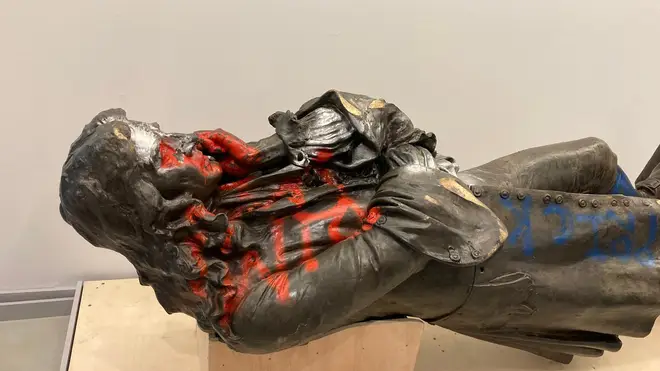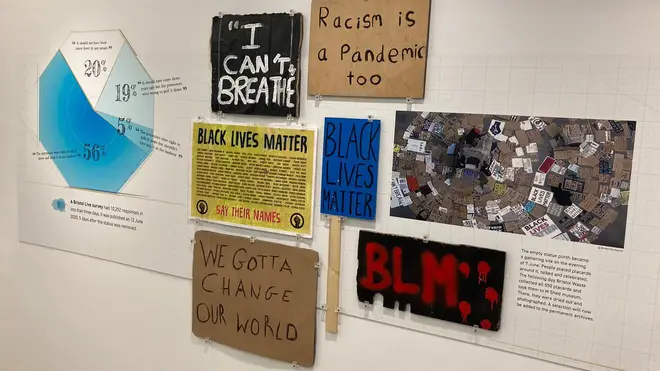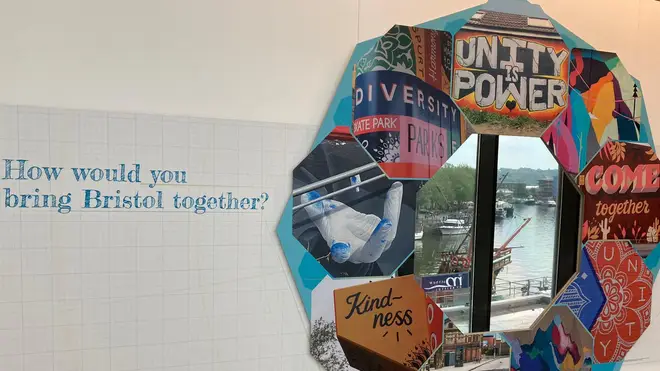
Ali Miraj 1pm - 4pm
4 June 2021, 07:38

The statue of slave trader Edward Colston that was toppled during a Black Lives Matter protest in Bristol is to go on public display ahead of a consultation about what should happen to it next.
The bronze memorial to the 17th century merchant, which was dragged through the city and thrown into the harbour on June 7 2020 before being recovered by Bristol City Council days later, will go on display at the M Shed museum alongside placards from the protests and a timeline of events.
"It's not an exhibition, it's not trying to answer all the questions," said Dr Shawn Sobers, associate professor at the University of the West of England and part of the We Are Bristol History Commission.
"We're using this opportunity to find out what local people think because we have to live in this city together.
"We know it's not going to be an overnight process but as a history commission we're going to take the answers on board, consult other people in the city and put recommendations back to the city on how we feel it can move forward."

The statue, featuring graffiti and damage from when it was pulled down, is unable to stand upright and so is displayed lying on a wooden stand.
"It would have been a very conscious decision to make it go up and it would cost quite a lot of money because it can't stand up by its own, it's actually fallen apart," said Dr Sobers.
"Also, to put it back upright in a way sends a signal that it's trying to reverse the toppling.
"It's been toppled, it's been laid on its back in a warehouse for a year and we want it to be a very transparent display to say this is how it is, this is what we're working with, and we want to ask what happens next."
Read more: Holidaymakers scramble to get back from Portugal before quarantine begins
Read more: Pfizer jab recipients have lower antibodies against Indian variant, study suggests
The statue is also displayed alongside a selection of quotes representing a range of reactions to the statue being toppled.
"This display isn't trying to be from an idealistic position or from an ideological position and celebrating or commiserating, it's trying to be balanced," Dr Sobers added.
There are many options for where the statue goes next, including removing it entirely from public view, creating a museum or exhibition about the transatlantic slave trade, or restoring the statue to its plinth.

Protesters stand off with police at Winston Churchill statue
The statue was erected in the city in 1895 in commemoration of the merchant, who had close ties with the city and was deputy governor of the Royal African Company, which transported around 100,000 enslaved Africans to plantations in the West Indies and America.
It was the centre of growing controversy for many years, before the murder of George Floyd prompted Black Lives Matter protests across the world that would eventually lead to the toppling of the statue.
Almost exactly a year ago it was thrown in the water at Pero's Bridge, which is named in honour of enslaved man Pero Jones who lived and died in the city.
Days later the statue was recovered by Bristol City Council and put into storage.
The council also recovered over 500 placards that protestors laid around the statue’s empty plinth.

Ray Barnett, head of collections and archives at Bristol City Council's culture team, said recovery of both statues and placards required painstaking preservation work.
"Most of the placards were just pieces of cardboard and they'd been left out on the site and it had rained so our first task was to stop them falling apart and turning into mush," Mr Barnett said.
"We had them all out in our studios to gradually dry out and they were lay down so they wouldn't lose their shape and become contorted."
He said that statue itself was “robust” but that some damage had occurred, with particular care taken with the outer wax layer that coated the statue.
"We had to be very careful as it dried out that the wax layer didn't dry and fall off, taking the paint with it, because we felt it was our duty to say this is the situation after the protest, this is what the statue looks like,” he said.
Mr Barnett described the display as "work in progress" but said it was important to quickly provide context to what happened, including the controversy that had surrounded the statue for decades.

People are being encouraged to come forward and give their views about the future of the statue.
“The anti-racist movement isn't about statues,” said Dr Sobers.
“It's trying to eradicate racism from society and bring equality where there's racial disparity which cuts across economic divides.
"But statues are a symbol of how seriously our cities in Britain are actually taking these issues."
Read more: First Homes scheme: Properties with 30% discount for first-time buyers go on sale
Read more: Half of UK adults have received both doses of a Covid vaccine amid rising cases
The display is the first part of the consultation, with a survey also launched for people to provide their views on the future of the statue and of how Bristol's history is told.
The Colston statue: What next? opens at M Shed on Friday.